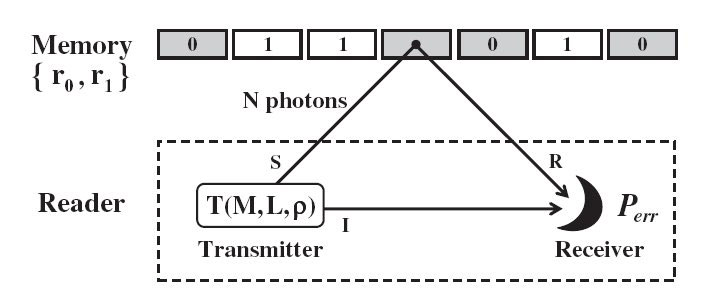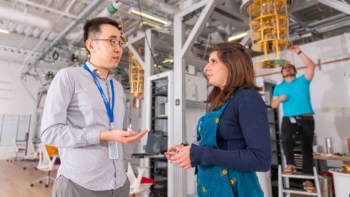
The intensity of light required to read data from an optical disc can be reduced dramatically by using entangled photons – according to a physicist in the UK. The concept, which has yet to be verified by experiment, could allow more data to be stored on CD or DVDs and lead to new types of rewritable optical storage media.
Entanglement is a quantum-mechanical property that allows particles to have a much closer relationship than permitted by classical physics. A famous example of this is the Einstein-Podolsky-Rosen (EPR) correlation between the position and momentum of pairs of photons. This is unlike the laser light used to read conventional optical discs, which does not have such strong correlations between photons.
EPR light can be created in the lab and Stefano Pirandola from the University of York, UK has calculated that it could offer a new way of reading data from optical discs. Pirandola came up with the idea when considering a memory comprising a collection of cells, each with two possible reflectivities. Higher reflectivity represents a “1”, and lower reflectivity a “0”.
Measuring intensities
In his proposed system, light hits the memory cell and a detector records the intensity of reflected light. Light is also sent directly from source to detector, creating ancillary “idler” modes that may improve the reading of cells by exploiting possible correlations within the signals (see figure below). “We do not know if the idler mode is necessary or not,” admitted Pirandola.
He believes that the gain in information – the difference in information extracted by an EPR source and the best classical one – can be almost 100%. “When it is equal to 100%, it means that the EPR source retrieves all the information perfectly, while all classical sources cannot read the memory.”
In most situations, creating a practical system based on entangled light is extremely difficult because interacting with the environment destroys the entanglement. According to Pirandola’s analysis, his system should not suffer that fate. Calculations reveal that measurements of cell reflectivities are not impaired by stray photons within the system that hit the detector after being scattered by the environment.
Putting theory into practice
The biggest challenge to building a real system based on Pirandola’s calculations is making a suitable EPR source. But this hurdle is not overwhelming, given that such sources have already been created in many quantum optics labs. This is done in a process called parametric down conversion, whereby light from a pump laser hits a special “nonlinear” crystal to yield entangled photon pairs.
Pirandola thinks that a practical system could employ just a few tens of photons to read each cell. However, this does not mean that expensive, single-photon-counting detectors are needed. Instead, the signal reflected from the cells can be combined with that from the pump laser, before being separated into two parts, each impinging on their own photodetector. “Thanks to this set-up, the input signal is amplified into a macroscopic one before being measured,” explains Pirandola.
However, even if such a system is shown to be far better at reading CDs and DVDs, its size and cost make it impractical for this application. The biggest barrier is the realization of small, efficient sources of EPR light. “One promising technology is two-photon emission from semiconductors,” says Pirandola. “[Such a source] can generate correlated photons at a very high rate, and be miniaturized as well.”
Unexpected results
One researcher who is surprised by the results of Pirandola’s calculations is Seth Lloyd from MIT: “The scheme considered is very close to quantum illumination, and we verified that quantum illumination could not do significantly better for detection than classical schemes.”
He says that Pirandola’s work is very important, providing a rare example of a quantum mechanical measurement that is significantly superior to a classical one.
Pirandola’s work is described in Phys. Rev. Lett. 106 090504.




